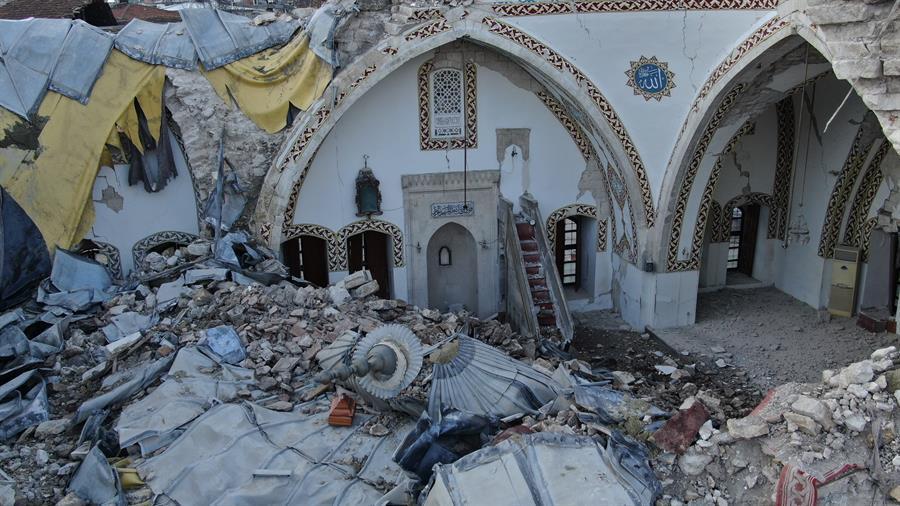Major earthquakes hit country’s historic sites
HATAY

While world-renowned heritages such as Mt. Nemrut, believed to have been the site of a first-century royal tomb, and Göbeklitepe, known as the oldest temple in the world, survived the Feb. 6’s major earthquakes undamaged, the tremors have seriously savaged the some of the country’s historical sites.
The magnitude 7.7 earthquake struck 7 kilometers (4.3 miles) below the surface in the southern province of Kahramanmaraş’s Pazarcık district on Feb. 6 at 4:17 a.m., according to the Disaster and Emergency Management Presidency (AFAD).
Another 7.6-magnitude earthquake followed the first one, which also jolted southern Türkiye. Over 300 aftershocks were experienced in the region, AFAD announced.
Hatay Parliament Building, one of the symbol structures of the nearby province which was affected by the quake the most, could not come through the terrible shake. The building, built as a movie theater by French architect Leon Benju in 1927, has taken its place in the pages of history as it was the building where the Hatay State was founded and its decision to join Türkiye was taken.
Deadly earthquakes also destroyed the first mosque built on Anatolian soil. The Habib-i Neccar Mosque was built in the Antakya district and was conquered by the Muslim Arabs in 638.
The historical mosque, whose dome, minaret and some walls were damaged, bore the name of a man who “first believed in the apostles of Jesus and gave his life for this cause.”
Very few buildings in the neighborhood of Şeyhali, where the mosque is located, survived the quakes. The old mansions and historical buildings in the region were destroyed.
The Culture and Tourism Ministry also announced that the shake damaged a part of the Hatay Archaeology Museum, where the Neo-Hittite statue of King Suppiluliuma and historical mosaics were exhibited.
Additional personnel were assigned to protect the museum, while solar-powered camera systems were installed in case there will be an electrical problem.
The historical Greek Orthodox Church in Antakya, the meeting point of different religions, was also heavily damaged in the devastating disaster as the roof of the building and some of its walls completely collapsed.
Meanwhile, the first examination reported no damage on the sculptures on the snow-covered Nemrut, a 2,134-meter-high mountain notable for the Hierotheseion (temple-tomb and house of the gods) built by the late Hellenistic King Antiochos I of Commagene (69-34 B.C.).
Şanlıurfa’s Göbeklitepe, one of the points where the 3-million-year hunter-gatherer period ended and the process in which the emergence of villages began, did not suffer any damage, though the tremor heavily struck the province.
The museums in Gaziantep, Şanlıurfa, Kilis, Osmaniye, Diyarbakır, Adana and the ancient city of Zeugma near Gaziantep’s Nizip district survived the earthquake undamaged, the ministry also announced.
















